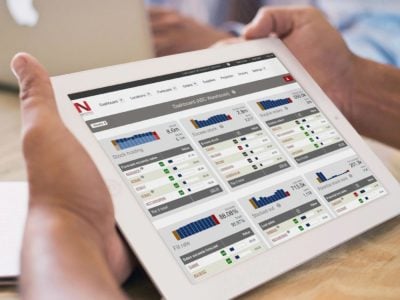May 04, 2016
Moving on from your inventory spreadsheet

We’ve covered the hidden costs, the data issues, the unforeseen complexities, and the workplace challenges that are directly related to managing your inventory on a spreadsheet. But the question remains: what are the other options?
For businesses who have had it with the problems and wasted hours that come with the "MASTER" spreadsheet, an Inventory Management System (IMS) is the likely alternative. This may sound like an expensive fix to your inventory problems, but the truth is, a quality IMS can actually pay for itself quite quickly, giving you a welcome return on your investment that will grow with each order you place.
What do Inventory Management Systems offer?
A leading IMS provides many tools, including inventory specific dashboards, key performance indicators to identify trends, exception-based alerts, automated classification tools that allow manual overrides where required, advanced forecasting tools, policy setting, supplier management and order management tools. Typically, these solutions include supporting documentation, training, and an online help desk. You can see already that this is a step up from crunching numbers in Excel.
Except in a few special cases, such solutions consistently provide a superior, effective, time-saving alternative. And while you may encounter some bugs when using an IMS, you’ll have a support team to help fix the issue. Compare that to common occurrence of mistakes in your inventory spreadsheet - you’re on your own to troubleshoot and fix the problem. The gulf between these two options is immense.
An IMS evolves over time, incorporating best-practice to cater for a wide range of scenarios commonly encountered by hundreds of customers. This ensures a considered and robust response to the issues that your business faces, while maintaining the focus on producing optimal order recommendations.
Think for a moment about your inventory planner. Instead of spending the bulk of their time getting the inventory planning spreadsheet ready for use, they can focus on making sound decisions about your business and the future inventory levels required to support your business plans and strategy. The difference is as clear as night and day.
Now available for small and medium sized businesses
Those familiar with IMS may recall that these solutions can cost big bucks to implement, and they can take months to implement. Previously, only larger businesses could justify the expense, but the game has changed in recent years.
With the insurgence of cloud applications, rapid and remote IMS installations are now a reality, as are far more affordable prices. New IMS solutions now cater to small and medium sized businesses, who were previously priced out of the market. Now, there are applications designed to help those businesses optimize their inventory like the larger counterparts.
Frankly, there’s never been more innovation and flexibility in this field than right now.
If you’re searching for an IMS, be sure to list the goals you’re looking to accomplish. Are stock-outs an issue that keep popping up? Or perhaps your spreadsheet is a bit off so you carry extra expensive excess stock just to play it safe? You should aim to strike a balance that keeps excess down without risking stock-outs.
A quality IMS will create forecasts and optimal purchasing that will enable you to strike the perfect balance consistently. There are lots of options out there, so be sure you pick the one that fits your business. And when you do, you can finally say goodbye to that maddening, overly-complex spreadsheet once and for all.
Written by Barry Kukkuk
In 2010 Barry began his journey with NETSTOCK. His enthusiasm for Inventory Management and his strong belief in “all things Cloud” collided resulting in the release of the Inventory Management solution - NETSTOCK. Barry is the CTO at NETSTOCK, where he is responsible for all customer-facing technologies and systems that keep thousands of NETSTOCK customer instances working correctly.

